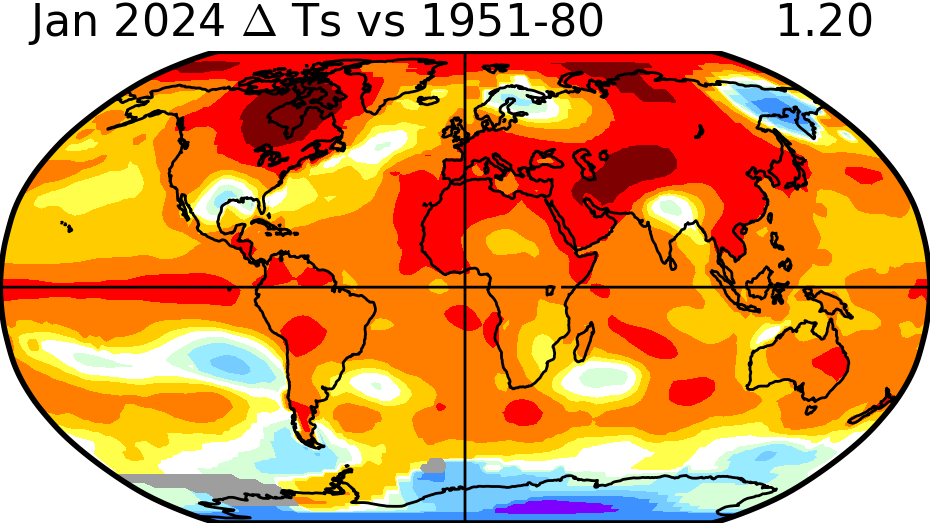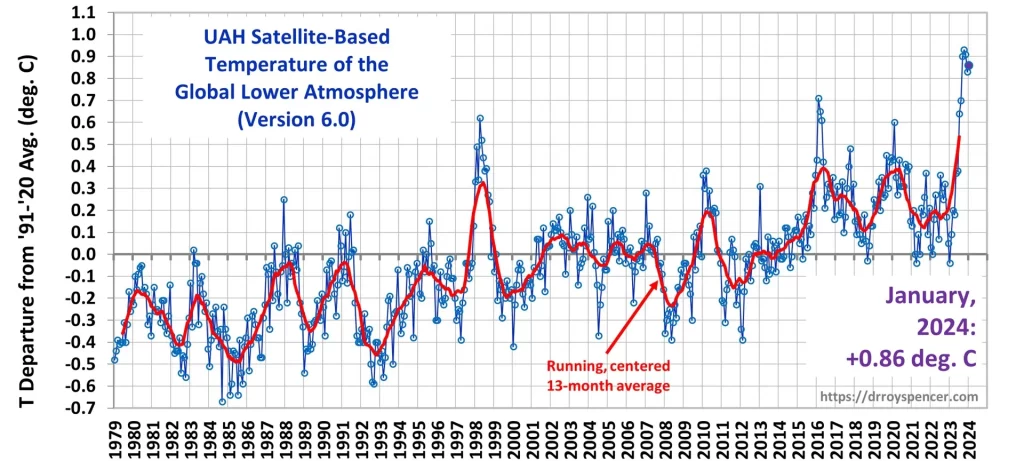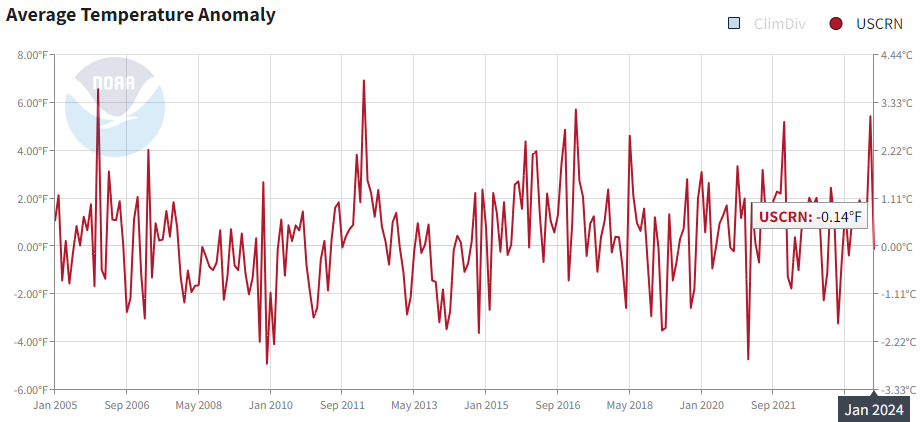Wrong, Time Magazine, January 2024 Was Not the Hottest on Record

An article in Time Magazine (Time) claims that January 2024 was the hottest ever on record for the planet. Titled, 2024 Had the Hottest January on Record Following 2023’s Hottest Year on Record the article is based on a single source of temperature data. Data from multiple other sources of temperature measurements refute this claim.
Time refers to the Copernicus EU climate service as the source for its alarming claim. Copernicus EU issued press release claiming:
January 2024 was the warmest January on record globally, with an average ERA5 surface air temperature of 13.14°C, 0.70°C above the 1991-2020 average for January and 0.12°C above the temperature of the previous warmest January, in 2020.
…
The month was 1.66°C warmer than an estimate of the January average for 1850-1900, the designated pre-industrial reference period.
The problem with that is that they are using a reference period of 1850 to 1900 that no other climate data source uses; a period, not coincidentally, more than 100 years of global warming ago when the Earth was cooler than today. For example, NASA Goddard Institute for Space Studies (GISS) produced a map of the globe that shows a significantly lower global temperature for January 2024.
The GISS global value was just 1.20°C compared to the 1.66°C claimed by Copernicus is different because NASA GISS is using a base period of 1951 to 1980. Copernicus seemingly cherry picked the reference period to fit the climate crisis narrative, and Time was too uninterested in seeking and presenting the truth to investigate the extraordinary claim, instead reporting it as an unchallenged fact.
When you look at satellite temperature data compiled by the University of Alabama in Huntsville (UAH), the “hottest January ever” claim also falls apart:
The satellite global temperature value is just 0.86°C, essentially half of what Copernicus claims at 1.66°C.
While it is not the globe, the United States (U.S.) is often cited as being a leading metric for climate change by both media and scientific sources. This is because the U.S. has more temperature stations per land area than any other region included in the global climatological network. As such, its readings have an outsized impact on global average temperature measurements. Yet when you examine the data from the US Climate Reference Network (USCRN), the best and most state-of-the-art surface measurement system in the world we find that not only was January 2024 not the hottest on the record it was below normal in temperature:
At -0.14°F (-0.08°C), there is certainly no cause for alarm about temperature in the United States. Yet Time does not mention any of these other sources.
It gets worse than the simple subversion of science by omission of critical facts. Time quoted a spokesperson for Copernicus in the article:
“Rapid reductions in greenhouse gas emissions are the only way to stop global temperatures increasing,” Samantha Burgess, deputy director of the Copernicus Climate Change Service, said in a statement.
That statement is nothing more than political advocacy calling for the reduction of greenhouse gases through restrictions of economies, rather than simply reporting the science. By using that quote, Time is complicit in pushing advocacy over science.
Time’s article is yet another ugly example of mainstream media preferring to push an alarming climate change narrative rather than reporting all of the facts, in context, honestly, and without bias. Shame on Time for failing to adhere to the most basic journalistic standards.






